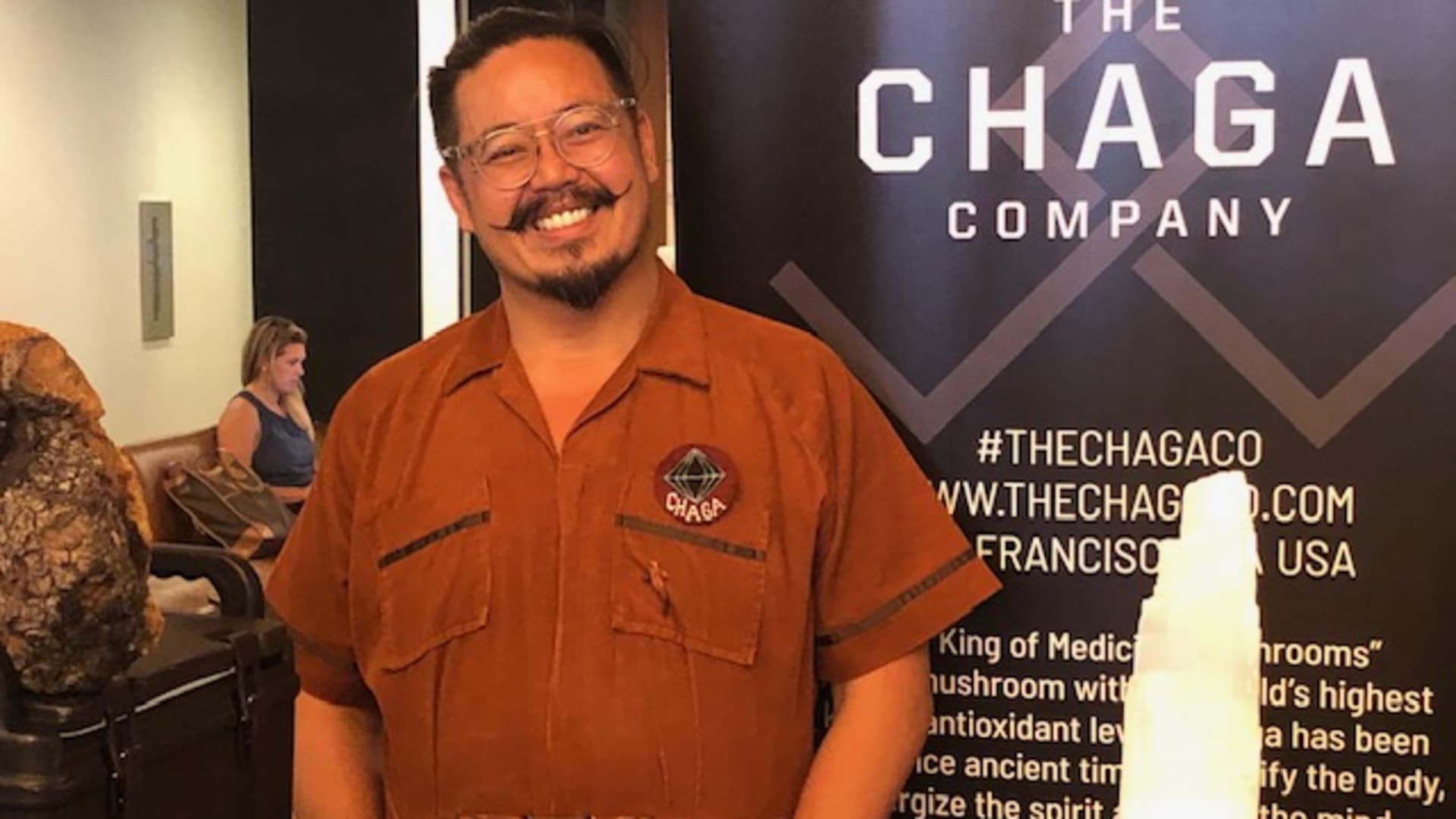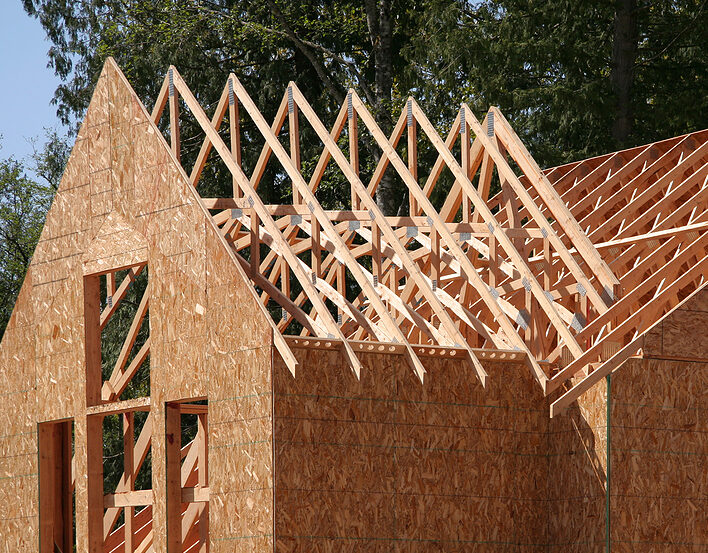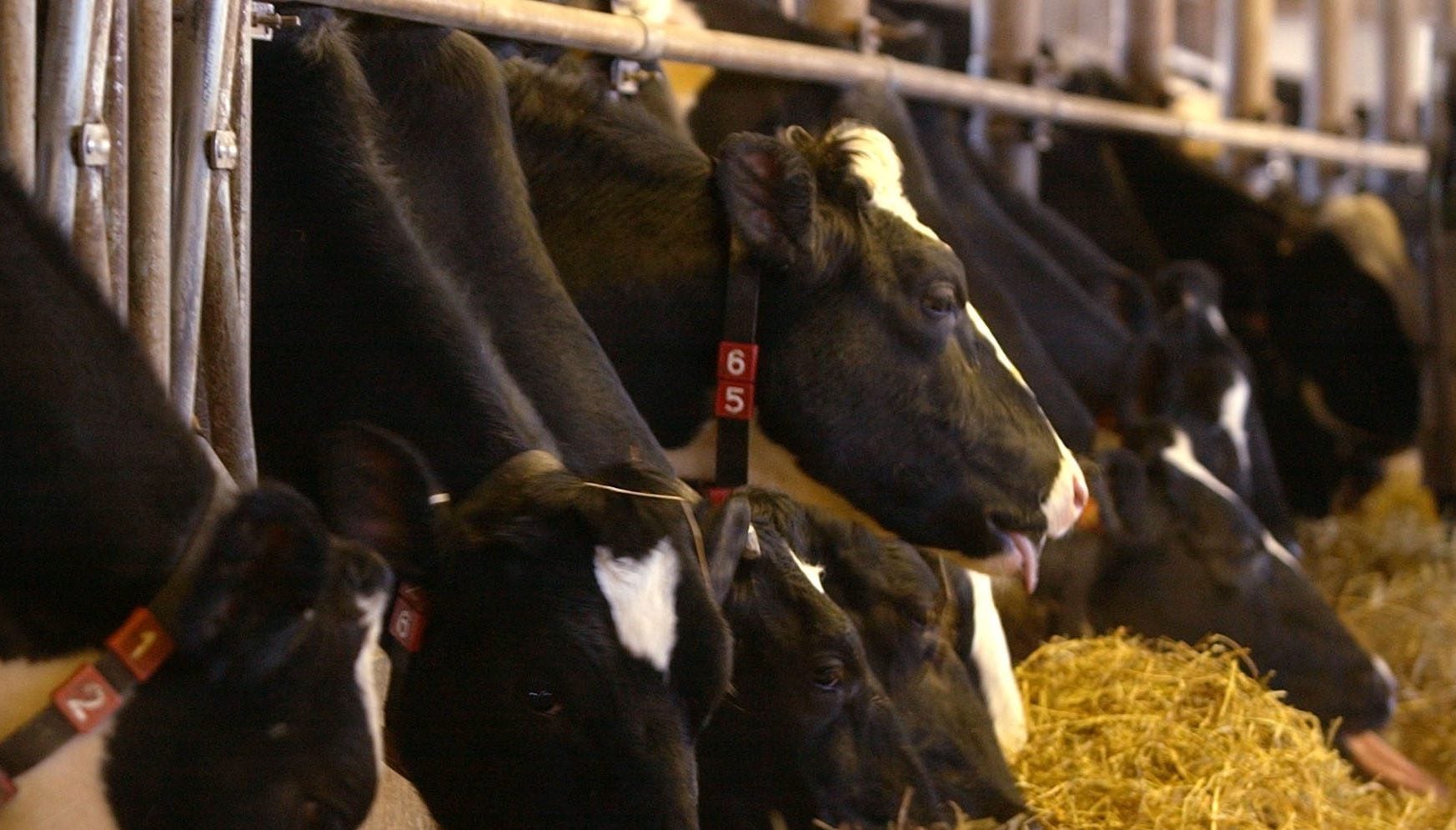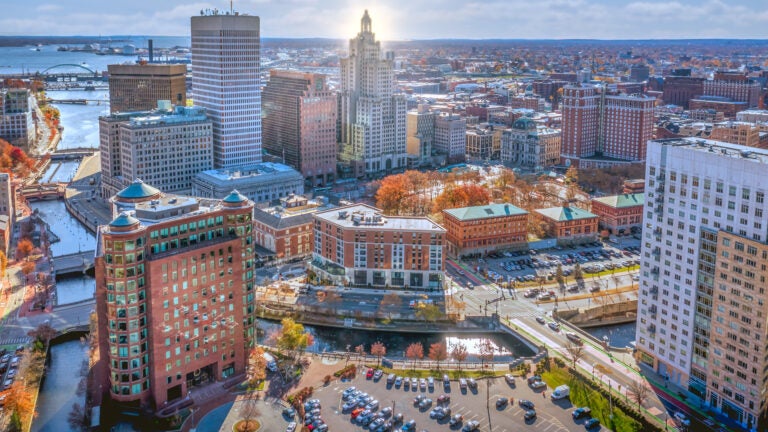Finance
LGBTQ small business owners struggle to find financing

Pixelcatchers | E+ | Getty Images
It’s not an easy time to be a small business in search of financing. For LGBTQ owners, the struggle has been even harder.
LGBTQ-owned businesses reported more rejections than non-LGBTQ businesses that applied for funding, according to a 2022 report from Movement Advancement Project, a nonprofit think tank that focuses on equality and opportunity, and the Center for LGBTQ Economic Advancement & Research (CLEAR).
With the tightening of lending standards, they could be at even more risk of falling behind, said Spencer Watson, president and executive director of CLEAR.
“The tighter economic conditions, the higher interest rates, the collapse of these smaller community banks and the resulting constriction of lending is certainly more detrimental for the LGBTQ community than non-LGBTQ community,” Watson said.
Concerns about the economy and lending conditions aren’t only on the minds of LGTBQ entrepreneurs. Overall, small business owners are skeptical about their future business conditions, said Holly Wade, executive director of the National Federation of Independent Business’ Research Center.
“The small business economy is being hindered by inflation, supply chain disruptions, and labor shortages,” she said. “While financing isn’t a top problem for small businesses, owners have expressed concerns about the health of the banking system for their business purposes in light of the banking turbulence in March.”
Yet, data show that when it comes to financing, LGTBQ small business owners are being left behind. In 2021, 46% of LGBTQ-owned businesses said they didn’t receive any of the financing they had applied to in 2021, according to the MAP/CLEAR report. In comparison, 35% of non-LGBTQ businesses that applied for funding were rejected, the report found. Much of the funding sought was through the Covid relief programs offered, Watson said.
“Those businesses were frequently smaller in size and they were also frequently younger and they had smaller revenues,” Watson explained. “They were struggling with those additional pressures because they were already in a weaker financial position to start with.”
Watson said there are similar themes emerging in the analysis of the 2022 Federal Reserve’s small business credit survey, which hasn’t been fully released yet.
While LGBTQ small business owners are very optimistic, they are also still more likely to report more kinds of financial challenges than non-LGBTQ businesses. Some six in 10 reported difficulties affording operating expenses over the last year, according to Watson, who prefers a gender-neutral pronoun. Most of the businesses are owned by people who identify as LGBTQ but their businesses aren’t necessarily oriented towards or servicing the LGBTQ community, they said.
Gavin Escolar
Courtesy: Gavin Escolar
Gavin Escolar, owner of The Chaga Company in San Francisco, is one of those small business owners that has had troubling finding financing. The 47-year-old gay man started his business, which makes products from chaga mushrooms, in 2018 by using his savings and credit cards. While he hasn’t been rejected for any loans he’s applied for, he has been only offered high-interest bridge loans from lenders to hold him over until a lower-interest small business loan becomes available, he said.
“They’re like, ‘oh yeah, you’re pretty much approved for this particular SBA loan, but it’s going to take like around six months for you to get it. But we have this other loan that you can bridge right now, that is 29.75%,’ or whatever exuberant cost,” Escolar said.
Right now he’s using loans from Square and PayPal and is hoping to figure out his next step so that he can pay down his credit card debt, buy inventory and do marketing. Escolar feels like the community needs more education on how to get the right financing.
“I’m only getting the higher [interest loans] because I feel like I don’t have established business credit,” Escolar said. “I’m fluctuating between my business credit and my personal credit. I don’t even know where to start on how to build a business credit.”
Forging her own path
Sarah Scala
Source: Sarah Scala
For 43-year-old Sarah Scala, going into debt wasn’t an option when she started her business, Sarah Scala Consulting. The Massachusetts company is an LGBT-certified business enterprise that provides leadership development, public speaking and leadership coaching.
Scala wanted to stay debt free, so she used her own savings and looked for opportunities elsewhere. Other than a Paycheck Protection Program loan during the Covid-19 pandemic, her only other external source of funding has been two grants from the Massachusetts Growth Capital Corporation. Those grants have helped her with digital marketing and capital expenses.
“There’s a number of wonderful associations that are really helpful if people are looking for support around funding,” said Scala, who operates the business out of her home.
One is SCORE, a network of volunteer business mentors, which Scala is involved with. She also has a strong partnership with the Massachusetts LGBT Chamber of Commerce, which can help open doors, she said.
Discrimination at play
Anti-LGBTQ bias and discrimination against LGBTQ small-businesses can arise during the loan process in a number of places, Watson said.
“If the lender discerns the applicants’ LGBTQ identity, they may choose to deny that loan or charge the applicant a higher cost for the credit they are approved for,” they explained. “This is particularly the case for highly visible members of the LGBTQ community — such as transgender or nonconforming gender presentations.”
It can also show up in other ways, like if a creditor doesn’t understand the business’s market opportunity, like not seeing the benefit or market need for an LGBTQ-serving establishment, Watson said.
Businesses oriented explicitly toward individuals of sexual minorities and that create sex-positive spaces are also frequently excused because Small Business Administration guidelines forbid loans for businesses of a “prurient sexual nature,” they said.
However, Watson cheered the recent rule from the Consumer Financial Protection Bureau that increases transparency in small business lending and includes demographic information, allowing small businesses to identify as women-, minority-, or LGBTQ-owned.
“Implementing that data collection would be an incredible boon to combating discrimination in the private lending market for small businesses,” they said.
The success of these businesses matter — not only for the owners but for the community at large, Watson said.
“There is a need for more small businesses owned by all types of marginalized communities so that those entrepreneurs can support themselves, their fellow community members, and create more inclusive spaces that are authentically by and for those communities,” they said.

Finance
What the COP29 Climate Finance Deal Means for the World

After more than two weeks of grueling deliberations at this year’s U.N. climate summit in Baku, Azerbaijan—known as COP29—the world’s wealthiest nations agreed to triple their climate finance commitments to developing nations.
For the world’s poorest countries, which are responsible for a minuscule share of global greenhouse gas emissions, securing the necessary financing to cope with a changing climate and shift away from fossil fuels is essential. But how much money they should receive and who should pay are contentious questions that sparked a bitter fight in Baku.
After more than two weeks of grueling deliberations at this year’s U.N. climate summit in Baku, Azerbaijan—known as COP29—the world’s wealthiest nations agreed to triple their climate finance commitments to developing nations.
For the world’s poorest countries, which are responsible for a minuscule share of global greenhouse gas emissions, securing the necessary financing to cope with a changing climate and shift away from fossil fuels is essential. But how much money they should receive and who should pay are contentious questions that sparked a bitter fight in Baku.
Wealthy nations ultimately agreed to commit at least $300 billion in climate finance annually by 2035. That amount eclipses their existing pledge of $100 billion per year, which they had already struggled to meet. Yet it is nowhere near the $1.3 trillion target that developing countries had been pushing for—and even that value likely falls short of their total financial need in confronting climate change.
The resulting agreement drew little fanfare—and in some cases outright dismissal—from developing nations and climate experts, although many said it moved the needle in the right direction.
“The poorest and most vulnerable nations are rightfully disappointed that wealthier countries didn’t put more money on the table when billions of people’s lives are at stake,” said Ani Dasgupta, the president of the World Resources Institute (WRI), a global research nonprofit, but “this deal gets us off the starting block.”
While the negotiation over money was always expected to make this year’s COP difficult, the past two weeks sparked chaotic and often heated debates, heightening fears that this summit could be the first since 2009 to fail to reach an agreement.
In addition to wealthy nations’ $300 billion pledge, the final deal includes vague language that calls on “all public and private sources” to work together to secure $1.3 trillion in climate financing by 2035. But most of that money, if it comes at all, will likely come from private sources—not the kind of public finance or grants that are preferred by developing countries, many of which are worried about taking on more debt.
U.N. Secretary-General António Guterres expressed disappointment in the agreement but said it laid the groundwork for more robust climate action going forward. “I had hoped for a more ambitious outcome—on both finance & mitigation—to meet the scale of the great challenge we face, but the agreement reached provides a base on which to build,” he wrote in a post on X.
Few developing countries celebrated the outcome. Frustrations continued to flare after COP29 President Mukhtar Babayev announced the deal, with the Nigerian delegation’s representative slamming the final text as a “joke” and “an insult to what the [U.N. Framework Convention on Climate Change] says.” Anger was also palpable from the Bolivian negotiator, who said the agreement “enshrines climate injustice” and “consolidates an unfair system.”
Some of the most scathing remarks came from Indian representative Chandni Raina, who railed against the agreement’s “paltry sum” and what she characterized as a “stage-managed” process.
“India opposes the adoption of this document,” she said, which she described as “nothing more than an optical illusion.” “We seek a much higher ambition from the developed countries,” she added.
Beyond the finance targets, one of the most contentious issues during the negotiations was what responsibility major emitters that still qualify as developing countries—such as China and Saudi Arabia—should have to funnel funds to poorer, lower-emitting nations.
China, which came under pressure from the United States, stood by its long-held stance that only developed countries should be obligated to contribute finance. However, the Baku deal includes an option for developing countries to contribute money voluntarily. That was seen as a compromise because it maintains the division between developed and developing countries while also opening the door to new contributions from the latter.
China has provided substantial sums of climate finance to poorer countries in recent years on its own terms, outside the auspices of the United Nations. Recent studies estimate that China’s climate finance flows have reached some $4 billion a year over the last decade, roughly 5 percent of the developed country total, although much of it is in loans, not grants.
China, while still far poorer than Western nations on a per capita basis, exceeded the European Union to become the second-highest cumulative emitter of carbon emissions last year, so it is increasingly under pressure to shoulder more of the burden of climate change. Shuang Liu, WRI’s China finance director, said Beijing sent positive signals about maintaining its commitment to the global energy transition at this year’s COP. “China does not see itself as part of the $300 billion” sum that wealthy nations pledged. “But,” she added, “China is willing to [provide] support with climate-related finance to other countries.”
While China came under pressure from the United States, U.S. negotiators didn’t have much ground to stand on at this year’s COP. The talks occurred under the shadow of the reelection of former U.S. President Donald Trump, who has long dismissed climate change as a hoax and whose team has signaled that he will again yank the United States out of the Paris climate accord. During his first term, Trump also cut off U.S. funding for the Green Climate Fund, a U.N. program that serves as one of the main climate finance channels.
The United States is “the world’s largest historical emitter and the second-largest emitter after China now,” said Alice Hill, who served as a special assistant to U.S. President Barack Obama and senior director for resilience policy on the National Security Council. “Its position matters as to how much climate change occurs going forward.”
COP29 offered a glimpse into what international climate diplomacy could look like in the years to come, in a world where Washington has again withdrawn from global climate change efforts.
“Despite some blockers intent on disrupting the process, this deal shows that the majority of countries remain committed to multilateralism and tackling the climate crisis,” said Cosima Cassel, a program lead at E3G, a research organization. “We have seen strong leadership from countries such as the U.K. and Brazil, as well as Colombia and Kenya, to push this deal to fruition.”
The world, which has already warmed around 1.3 degrees Celsius above preindustrial levels, is currently on track to heat up by 3.1 degrees Celsius above preindustrial levels by the end of the century, according to the United Nations. That’s more than double the key 1.5-degree target that was set under the 2015 Paris agreement, and scientists stress that every additional increment of warming raises the risks of the severe weather increasingly sweeping the world.
Despite its frustrating outcome, COP29 has, importantly, shaped public perceptions of wealthier nations’ climate finance responsibilities, experts said.
“COP29 has helped mainstream the simple fact that rich countries have a historic obligation to help poorer countries cut emissions and cope with extreme weather, and that doing so will benefit every country on Earth,” said Michael Wilkins, the executive director of the Centre for Climate Finance & Investment at Imperial College London.
Finance
Trading house Itochu looks to finance Seven & i management buyout

Trading house Itochu Corp. is considering helping finance the potential buyout of Seven & i Holdings Co. by its management, responding to a request from the founding family of the Japanese retail giant, sources close to the matter said Monday.
Itochu, the parent of convenience store chain operator FamilyMart Co., is apparently in the initial phase of the study, the sources said. The move could complicate the around 7 trillion yen ($45 billion) buyout offer by Canada’s Alimentation Couche-Tard Inc. toward Seven & i.
File photo taken in March 2024 shows Itochu Corp.’s Tokyo headquarters in Minato Ward. (Kyodo)
The Seven & i founding family, which anticipates a management buyout worth 9 trillion yen, has also contacted some banks and investment funds, according to the sources.
Alimentation Couche-Tard, the operator of Circle K convenience stores, has raised its buyout offer from the initial offer of around 6 trillion yen.
With its possible participation, Itochu may expect some synergies between FamilyMart and Seven-Eleven, two of the leading convenience store chains in Japan. But it could also cause antitrust issues because of their dominance in the industry, and Itochu may need to keep its investment ratio low, the sources said.
Related coverage:
Seven & i mulls management buyout to fend off Canadian takeover bid
Seven & i unveils 1.7-fold sales growth plan amid takeover pressure
Japan retailer Seven & i reveals its own strategy amid takeover offer
Finance
Gen-Z outpaces millennials in setting 5-Year financial plans amid economic challenges

Gen-Z adults are more likely than Millennials to have a five-year financial plan, according to a new survey by First Direct. The survey, conducted by OnePoll in October among 4,000 participants, found that 59% of Gen-Z savers—those born after 1996—have set financial goals for the next five years, compared to just 40% of Millennials (born between 1981 and 1996).
Despite a challenging economic environment, including rising living costs and wage stagnation, both generations remain committed to achieving their financial aspirations. Around 73% of Gen-Z respondents and 76% of Millennials said they are determined to reach their financial goals, though many have had to delay milestones like home ownership or career progression.
Also read: Andhra achieves 10.44% growth in GSDP in 2023-24, shows economic survey report
For Millennials, the most common financial goals include achieving a better work-life balance (34%), saving for retirement (29%), and increasing income (29%). However, half (50%) of Millennials reported that the cost-of-living crisis has delayed their financial plans, with economic uncertainty and stagnant wages cited as major factors.
Carl Watchorn, head of banking at First Direct, commented, “Younger people have very high aspirations when it comes to achieving their financial goals. Despite facing challenges like higher living costs and the aftermath of the pandemic, they remain incredibly resilient and committed to improving their standard of living.”
Also read: Micro-mance to future-proofing: Dating trends 2025 for Genz and millennials
Tips for Financial Resilience
-First Direct also shared several tips for boosting financial resilience, including:
-Speak to your bank about available tools and support.
-Set specific goals, such as saving for a trip, and adjust spending to meet those targets within a set timeframe.
-Use budgeting apps to track spending and compare it with your goals.
Also read: Rural women entrepreneurs: Overcoming economic & social adversities
-Build a financial buffer by setting aside a regular amount each month, with some financial products offering good returns for consistent savings.
As both Gen-Z and Millennials navigate economic pressures, their focus on long-term financial planning highlights a generation committed to securing a stable future.
-

 Business1 week ago
Business1 week agoColumn: Molly White's message for journalists going freelance — be ready for the pitfalls
-

 Science6 days ago
Science6 days agoTrump nominates Dr. Oz to head Medicare and Medicaid and help take on 'illness industrial complex'
-

 Politics1 week ago
Politics1 week agoTrump taps FCC member Brendan Carr to lead agency: 'Warrior for Free Speech'
-
/cdn.vox-cdn.com/uploads/chorus_asset/file/25739950/247386_Elon_Musk_Open_AI_CVirginia.jpg)
/cdn.vox-cdn.com/uploads/chorus_asset/file/25739950/247386_Elon_Musk_Open_AI_CVirginia.jpg) Technology1 week ago
Technology1 week agoInside Elon Musk’s messy breakup with OpenAI
-

 Lifestyle1 week ago
Lifestyle1 week agoSome in the U.S. farm industry are alarmed by Trump's embrace of RFK Jr. and tariffs
-

 World1 week ago
World1 week agoProtesters in Slovakia rally against Robert Fico’s populist government
-

 Health3 days ago
Health3 days agoHoliday gatherings can lead to stress eating: Try these 5 tips to control it
-

 News1 week ago
News1 week agoThey disagree about a lot, but these singers figure out how to stay in harmony




















